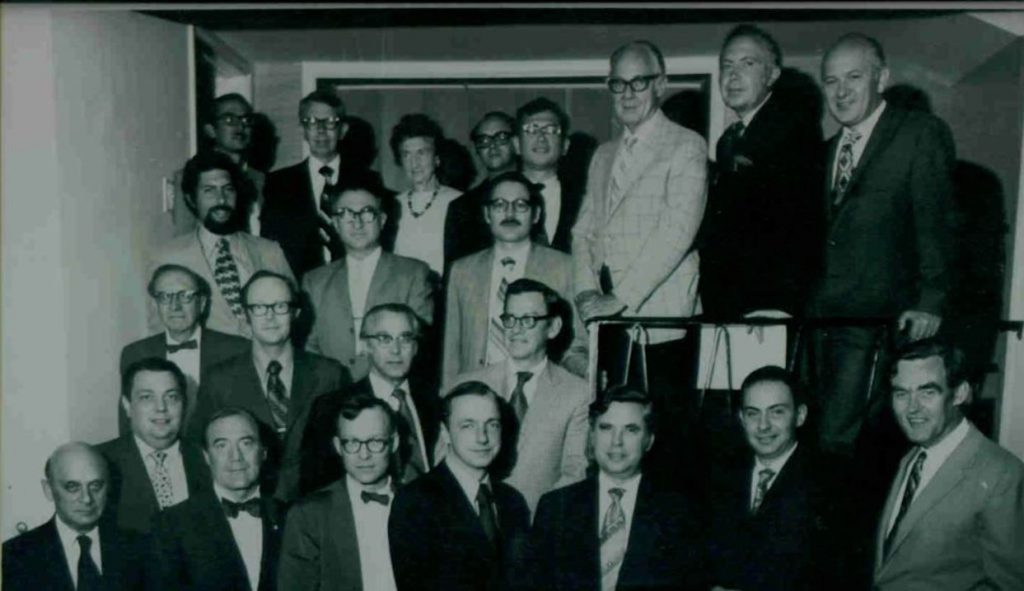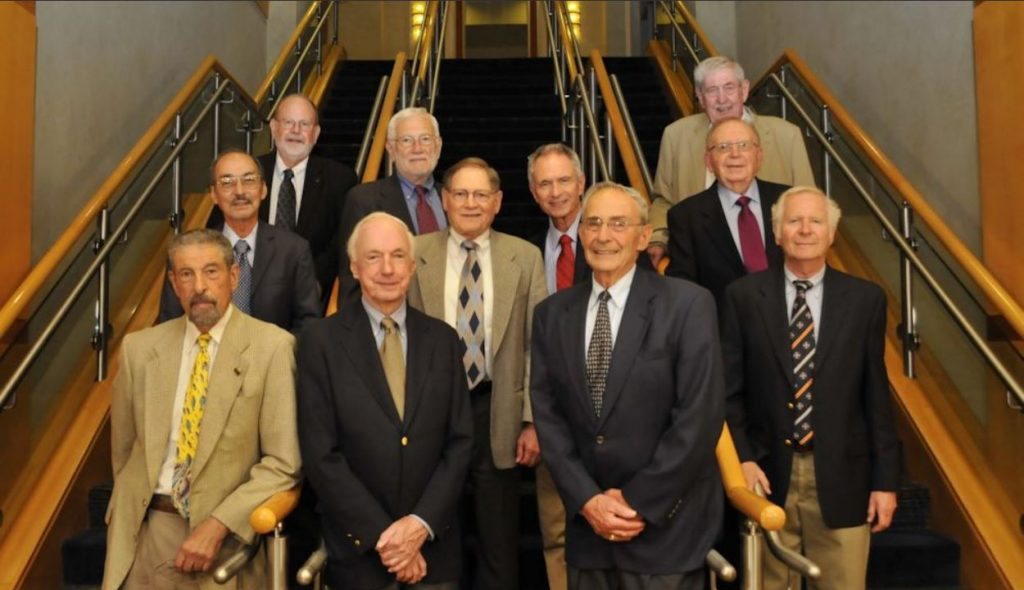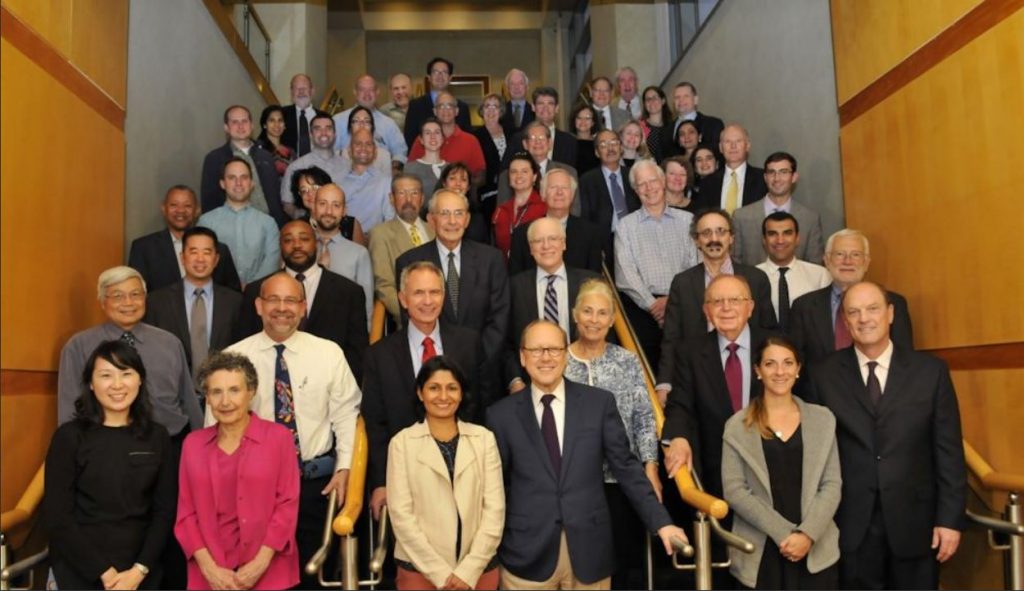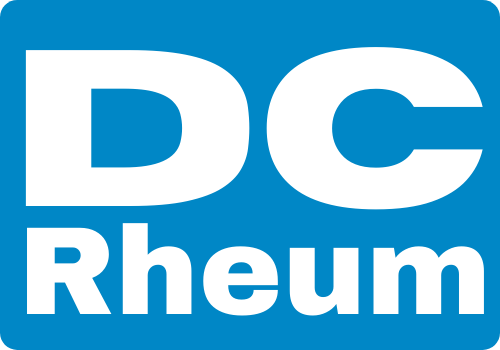About Us
In the aftermath of the Second World War, medical practice was at a turning point. Antibiotic therapy with penicillin and anti-inflammatory therapy with aspirin had just reached mainstream use. The National Institutes of Health had just been established, creating a place for young investigators to discover novel solutions to intractable problems in medicine. Multiple national societies appeared for the benefit of countless diseases, encouraging innovation and discovery. In the midst of this national engagement, a local special interest group, the Rheumatism Society of the District of Columbia (D.C. Rheum or the Society), became one of the first local rheumatological professional society. Founded in 1946, the Society aimed “to stimulate interest in and increase the knowledge of rheumatic diseases among physicians and laymen.” Originally a collection of physicians from various fields of medicine (including cardiology, pediatrics, and orthopedic surgery), D.C. Rheum grew to be a meeting place for the capital’s foremost intellectual contributors to the state of the art in the developing specialty of rheumatology.

Convened by Dr Darrell C. Crain, a photograph of the inaugural organizational meeting for the society, taken on June 4, 1946, which portrays Drs Charles McEnerney, Henry Schreiber, Bernard Walsh, Isadore Levin, William Tobin, Carl Berg, Wallace Yater, George Wyatt, Julius Neviaser, Donald Ingam, William Earl Clark, Milton Cobey, and Philip Hench, as well as Crain himself. Also pictured are Cols Charles R. Mueller and Wallace Graham as well as Gen George C. Beach and Mr Theodore Wiprud. Another early member was Dr Margaret Mary Nicholson. These individuals came from a variety of backgrounds, including rheumatology as well as orthopaedic surgery, cardiology, and paediatrics.
The society effectively functioned as an interest group, although its goal of increasing interest in rheumatic disease among laymen was limited to doing so via local organisations (like the Arthritis Foundation), since membership was ‘limited to physicians and other scientists having a particular interest in rheumatic diseases.’
Rheumatology as a specialty, much like other medical subspecialties at the time of the World Wars, was still in its infancy – a sort of side project that physicians could take up as a subsection of their regular practice. Bernard Walsh was one of the founding members of DC Rheum, but was also the District of Columbia’s first cardiologist. His interest in rheumatic disease stemmed from the ravaging effects of rheumatic fever on the heart, particularly in the paediatric population. Another early member, Margaret Mary Nicholson, approached the same issue from the background of paediatric and obstetrics training. Among the orthopaedic faction were Julius Neviaser and Milton Cobey.
During the subsequent 40 years, DC Rheum itself was beginning to solidify its place in the Washington, DC rheumatology community. Meetings were held on the third Wednesday of the month between September and May or June. Speakers were often prominent rheumatologists from around the country, and also included orthopaedic surgeons, immunologists, basic scientists, radiologists, and even the US Surgeon General. By 1979, there were designated nights devoted to talks by ‘local talent’ and limitations on how many lectures could be given by orthopaedists, signalling a desire for distinction from the old view of rheumatology as pre-operative evaluation to orthopaedic surgery. This sense of prestige was fuelled by presentations from prominent out-of-town speakers, national specialists in their fields, who presented information on the cutting edge of basic science as it was applicable to the practice of rheumatology.
In 1977, the DC Rheum executive committee decided to create a continuing medical education (CME) committee to ensure that its meetings would be accredited by the American Medical Association as counting towards requirements for physicians’ maintenance of certification in the United States. In 1982, DC Rheum successfully applied for CME accreditation with the local Medical Society of the District of Columbia. Topics of discussion at routine meetings included the discovery of fibrin split products in the urine of patients with lupus nephritis, presented by Mary Betty Stevens on 13 May, 1970.

Dr Stevens was the first woman to serve as the division chair of rheumatology at Johns Hopkins University. Another topic, ‘Mechanism of corticosteroid action in clinical usage,’ was presented on 26 October 1977 by Dr Anthony Fauci of the National Institute for Allergy and Infectious Diseases. Dr Fauci would later go on to describe mechanisms of immune system regulation in autoimmune diseases.
By this period in its history, the majority of DC Rheum members were typically dedicated rheumatologists with a handful of related specialists (podiatrists, physical therapists, even a dentist!). Monthly talks kept with the pace of scientific discovery, including a discussion of the first description of drug-induced lupus presented by Lawrence Shulman, the first director of the NIAMS, on 14 October, 1970. Darrell Crain remained one of the most active members in the organization. He served on DC Rheum’s executive committee and recruited many physicians to the Society. After establishing a rheumatology clinic at Georgetown University, he co-founded the Arthritis Rehabilitation Centre in DC, where he practised until his retirement in 1987.
In 1976, Joseph Croft became the Society’s president. He organized notable scientific talks for the Society, including one entitled ‘Mixed Cryoglobulinemia’ which was ‘well received by both clinicians and researchers.’ Other notable members of the DC Rheum leadership in this time period included Ronald Lamont-Havers, Paul Rochmis, John Decker, Paul Plotz, Jack Klippel, Henry Roth, Nathan Zvaifler, and Kenneth Austin. Members of DC Rheum were affiliated with multiple local educational and research institutions. Among them were George Washington University (GWU), Georgetown University (GTU), and the NIAMS. One of the major contributors to DC Rheum, John Decker, served as the head of the NIAMS, where he oversaw clinical research and postgraduate training of countless medical fellows and researchers. He also served as director of the NIH Clinical Centre, where basic research made its way into clinical practice.

These days, DC Rheum has actively followed the rapid-fire developments currently underway in the field of rheumatology. Recent updates and presentations have included discussions on ‘Emergent biologic targets in systemic lupus erythematosus’ (presented 25 April 2012 by Dr Vasileios Kyttaris of Beth Israel Deaconess Medical Centre) and ‘JAK inhibitor – new therapy in rheumatoid arthritis ’ (presented by Dr Joel Kremer of Albany Medical College, New York). Since 2002, the group has instituted an Annual Fellows Forum, an event at which rheumatology fellows in the area were able to present research and case reports at a half-day conference.
Prizes were awarded for best presentations in clinical research, basic science, and case presentations (first proposed by Dr. Arthur Weinstein, President 2008-2009). In 2011, Dr. Christopher Collins (President from 2015-16) was recruited to develop this web site for the group. The product was a modern interface which could facilitate networking within the Society. Included was a calendar of upcoming events, access to information on research, job postings, and a membership list, as well as a mechanism for contributing membership dues.
As the group continues to grow, the new initiatives continue to be implimented, such as increased interaction between DC Rheum and local non-profit groups with special interests in rheumatic diseases in order to allow those groups to present their information directly to physician members (courtesy of Dr. Donald Thomas – President 2016-2017). Another initiative designed to keep the group up to date on current practices is a continuing medical education course in musculoskeletal ultrasound (Dr. Paul DeMarco – President 2011-2012), one of the most rapidly growing technologies in clinical rheumatology.

Over the last seventy years, the Rheumatism Society of the District of Columbia has grown and evolved in parallel to the field of rheumatology itself. From its origins as an interest group for physicians it developed into an organization dedicated to continuing medical education for rheumatologists in the DC community, providing a forum for professional networking and knowledge dissemination. From an interest group to a professional organization, DC Rheum over the years has become a meeting place for the great minds of rheumatology and an interface between basic sciences and clinical practice in rheumatology.
In September of 2016, members of DC Rheum gathered to celebrate the 70th anniversary of this historic society. Over 50 members attended, including nearly a dozen members who had been also present for a society photo taken in 1971. Current membership stands at over 250 individuals.
A special thanks for Dr. Sonia Silinsky Krupnikova, who worked in collaboration with Dr. Victoria Shanmugam and others, to combine her passions for medicine and history to research the Rheumatism Society of the District of Columbia. A full version of the history of the Rheumatism Society of the District of Columbia has been recently published in the International Journal of Rheumatology and can be found here.
Our mission is to serve the life-long educational needs of rheumatologists, implement the best care practices for our rheumatic patients, and foster a sense of community amongst local rheumatologists.
